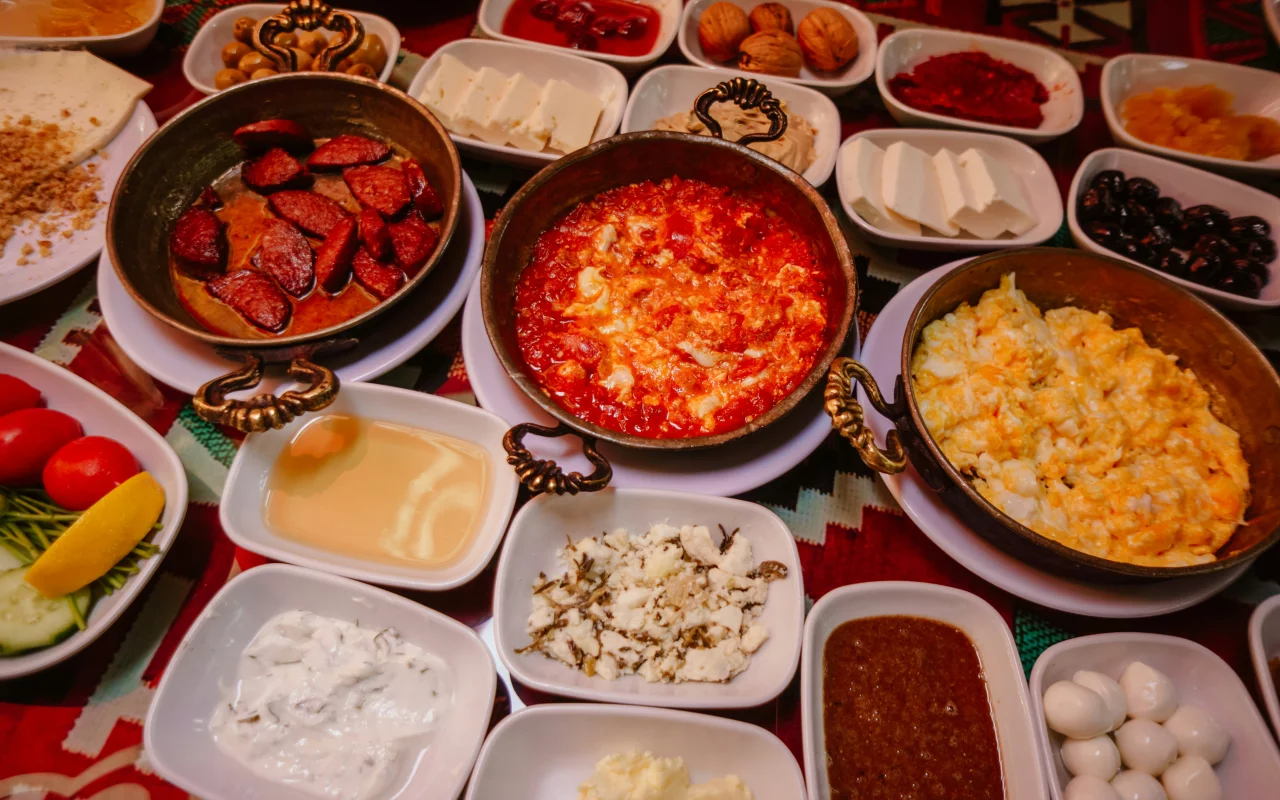
Food Guide: Discovering the Richness of Turkish Cuisine
When it comes to food, Turkey is a paradise for the senses. Rich in history, flavor, and variety, Turkish cuisine reflects centuries of cultural blending—from the Ottomans to the Mediterranean and the Middle East.
When it comes to food, Turkey is a paradise for the senses. Rich in history, flavor, and variety, Turkish cuisine reflects centuries of cultural blending—from the Ottomans to the Mediterranean and the Middle East. Whether you’re strolling through Istanbul’s vibrant markets or enjoying a home-cooked meal in a small village, you’ll find that food in Turkey is much more than a necessity—it’s a way of life.
The Essence of Turkish Cuisine
Fundamentally, Turkish cooking is about striking a balance between flavors and herbs, meat and vegetables, and sweet and savory. Most meals consist of grilled meats, fresh vegetables, olive oil, and yogurt, served with tea and freshly baked bread.
Turkish meals usually follow a structured order:
- Başlangıç (Starters)
- Ana Yemek (Main Course)
- Tatlı (Dessert)
- İçecekler (Drinks)
Let’s take a closer look at each.
Starters (soups and meze)
In Turkey, starters are typically shared and provided in tiny servings, particularly at parties. Well-known ones consist of:
- Ezme: A spicy tomato and pepper dip.
- Haydari: A thick yogurt dip with garlic and herbs.
- Dolma: Grape leaves stuffed with rice and spices.
- Mercimek Çorbası: A creamy red lentil soup, commonly eaten year-round.
- Tarhana Çorbası: A fermented dried soup mix, unique to Anatolian tradition.
Each dish, no matter how small, carries its own identity and regional variation. Together, they invite you to slow down, savor each bite, and enjoy the company around you—because in Turkey, the appetizers aren’t just the beginning of the meal, they’re often the highlight of the experience.
Main Dishes
Main courses vary by region, but they usually fall into a few key categories:
Kebabs & Meat Dishes
- Adana Kebab: Spicy minced meat on skewers.
- Iskender Kebab: Thinly sliced döner meat over bread, topped with tomato sauce and yogurt.
- Köfte: Turkish meatballs, often grilled or fried.
Vegetarian Options
- İmam Bayıldı: Eggplant stuffed with onions, garlic, and tomatoes—served cold with olive oil.
- Zeytinyağlı Fasulye: Green beans cooked slowly in olive oil.
Regional Specialties
- Testi Kebabı (Cappadocia): Meat and vegetables slow-cooked in a sealed clay pot.
- Hünkar Beğendi (Ottoman Palace Cuisine): Lamb stew over creamy eggplant purée.
Breads & Pastries
Bread is essential to Turkish life. You’ll find it on every table, from breakfast to dinner.
- Simit: A sesame-crusted bread ring, perfect for breakfast.
- Pide: Often called “Turkish pizza,” topped with cheese, meat, or eggs.
- Lahmacun: Thin dough topped with spicy minced meat and herbs, rolled up with greens and lemon.
Desserts
Turkish desserts are indulgent, often combining nuts, sugar, and syrup.
- Baklava: Layers of filo dough, filled with pistachios or walnuts, soaked in syrup.
- Künefe: A cheese-filled pastry cooked until crispy, served hot with syrup.
- Sütlaç: Creamy rice pudding, often baked for a caramelized top.
Drinks
- Çay (Tea): Served in tulip-shaped glasses, black tea is the national drink.
- Türk Kahvesi (Turkish Coffee): Finely ground and brewed in a cezve, served with a glass of water and sometimes Turkish delight.
- Ayran: A cold yogurt-based drink, perfect with grilled meats.
- Şalgam: A fermented black carrot drink, popular in the southeast.
Street Food Culture
Turkish street food deserves its own spotlight:
- Midye Dolma: Stuffed mussels with rice and spices.
- Kokoreç: Grilled lamb intestines seasoned with oregano and chili.
- Balık Ekmek: Grilled fish sandwich, especially famous in Istanbul’s Eminönü.
Dining Culture & Concluding Remarks
In Turkey, dining is always about interacting, sharing, and demonstrating respect rather than just eating. The core of Turkish culture is hospitality. Don't be shocked if someone offers you food, tea, or even a second helping without asking, whether you're a visitor in someone's house or dining at a tiny neighborhood restaurant. It's all a part of welcoming you.
In addition to being kind, you are encouraged to sample some of the food on the table because each dish frequently has a backstory, a memory, or a regional custom. A simple "Ellerinize sağlık" (meaning "Bless your hands") is also one of the most appreciated compliments you can give the cook if you enjoy the dish, which you almost certainly will. No Turkish dining experience is complete without tea. Served in delicate tulip-shaped glasses, çay is more than a beverage—it’s a symbol of togetherness. Whether it’s sipped slowly during long conversations with family, offered as a sign of trust during business meetings, or shared between friends at a street café, tea brings people together. Conversations flow, laughter echoes, and time seems to pause over a glass of hot, strong black tea.So, whether you’re a fan of savory kebabs, flaky pastries, hearty stews, or sweet, syrup-soaked desserts, Turkish cuisine has something to delight every palate. But more than that, it offers a warm invitation into a culture where food is love, and meals are moments of connection.
Let this guide be your first step into the rich world of Turkish cuisine. And remember: in Turkey, the best meals aren’t just cooked—they’re shared.